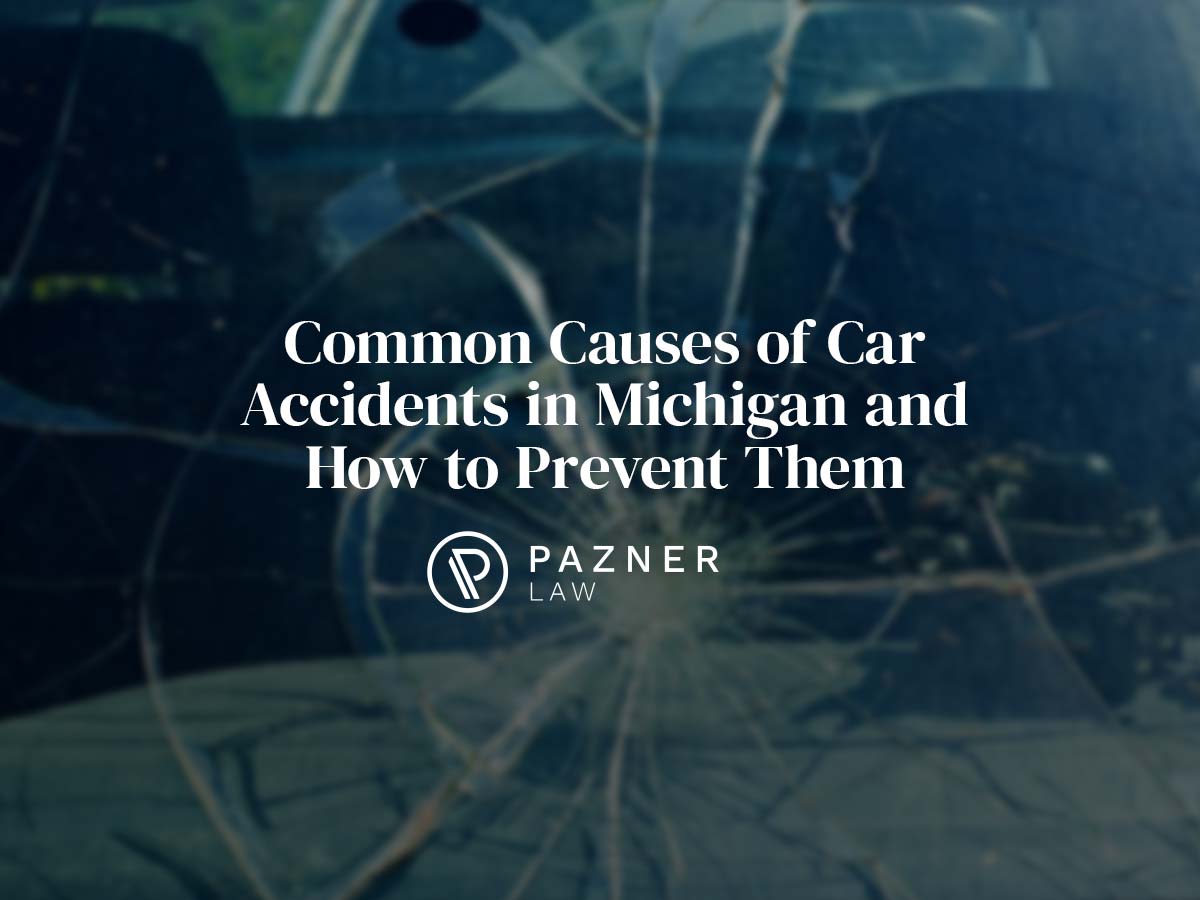As we embark on the complex web of roadways in Michigan, understanding our state’s common causes of car accidents is crucial. Each year, thousands of Michigan residents experience the unfortunate aftermath of vehicular collisions, many of which can be attributed to a handful of common causes.
These accidents disrupt lives and lead to substantial economic costs and, in the worst cases, loss of life. Our objective in this post is to highlight these prevalent causes and offer effective strategies for their prevention.
By understanding the hazards and implementing safe driving practices, we can make Michigan’s roads safer for everyone. Knowledge is power, and it’s time we put that power behind the wheel.
An Overview of Car Accidents
To understand car accidents fully, evaluating them from several angles, such as statistical data, causes, and preventive measures, is essential. According to the World Health Organization (WHO), approximately 1.35 million people die each year due to road traffic accidents, making it the eighth leading cause of death globally. More often than not, car accidents are caused by human error. Distracted driving, alcohol-impaired driving, speeding, reckless driving, and failure to obey traffic laws are among the leading causes of car accidents.
However, the causes are sometimes beyond human control, such as mechanical defects and inclement weather conditions. It is worth noting that the consequences of car accidents are not just confined to physical harm and property damage. They also encompass a host of economic and psychological effects. Not only do they considerably affect the personal life of the victims and their families, but they also impose colossal economic burdens on the country regarding healthcare costs, loss of productivity, and other related expenses.
It is important to mention that there are numerous ways to prevent car accidents or at least mitigate their severity. These include adhering to traffic laws, avoiding risk-taking behaviors like alcohol-impaired driving and speeding, maintaining cars, and improving road infrastructure.
Understanding Michigan’s Auto Accident Risks

Understanding automotive accidents’ most common causes is necessary to avoid them. The origins of these accidents are quite specific for the residents of Michigan. Data from government reports, insurance companies, and law enforcement agencies have underscored the following driving behaviors and inputs as the state’s leading causes of car accidents.
Distracted Driving
Distracted driving, which includes any activity that diverts a driver’s attention away from driving, like texting, talking on a phone, eating, and drinking, has steadily grown to become one of the top causes of car accidents in Michigan and throughout the U.S.
With the proliferation of smartphones and other mobile devices, distraction-related accidents have significantly increased over the years. Public awareness campaigns intended to educate the public about the dangers of distracted driving have had some impact. However, the problem persists.
Drunk Driving
Drunk driving remains a major cause of fatal car accidents in Michigan despite stringent laws and enforcement. Alcohol impairs a driver’s capacity to operate a vehicle safely, affecting their ability to judge speed and distance, reducing reaction time, and impacting overall vehicle control. The state has introduced breathalyzer interlock devices for repeat offenders and severe financial and criminal penalties for those caught driving under the influence to combat this.
Speeding
Speeding is another leading cause of car accidents in Michigan. Exceeding the speed limit breaks the law and increases the risk of an accident. It reduces the driver’s ability to steer safely around curves or objects in the roadway and extends the distance necessary to stop a vehicle. Moreover, it also increases the distance a vehicle travels while the driver reacts to a hazardous situation.
Reckless Driving
Reckless driving, which encompasses a range of infractions such as tailgating, unsafe lane changes, failure to signal, or running red lights, is another significant contributor to Michigan’s auto accidents. Reckless drivers put themselves at risk and other innocent road users who happen to be on the road at the wrong time.
Weather Conditions
Michigan’s weather, particularly in winter, commonly contributes to road accidents. Snow, ice, and heavy rains can affect visibility and make roads slippery, increasing the chances of accidents. Motorists must adjust their driving behavior to the prevailing weather conditions for their own safety and that of other road users.
Failure to Yield Right of Way
Another common cause of auto accidents in Michigan is failing to yield the right of way. This happens when a driver does not yield to other motorists, cyclists, or pedestrians when required by law. This is especially dangerous at intersections, where vehicles coming from different directions can easily collide if not properly yielding to each other.
Preventive Measures Against Car Accidents in Michigan

Car accidents are prevalent in Michigan, but preventive measures can be implemented to lower their occurrence significantly. This section addresses different approaches to reduce the rate of these accidents, from safe driving practices and stricter penalties for drunk driving to the use of advanced technologies that curb distracted driving. As a driver, your primary responsibility is to ensure road safety. This description can serve as a guide to knowing what to do and not do to prevent unfortunate incidents while driving.
Adoption of Safe Driving Practices
Safe driving practices are the most basic preventive measure that every driver must employ to prevent car accidents. These practices include maintaining safe speeds, observing traffic signals and road signs, keeping a respectable distance from other vehicles, and avoiding aggressive driving.
Moreover, safety equipment like seat belts and child car seats should be correctly used, which offers significant protection in the event of a collision. Driving in unfavorable weather conditions like rain, snow, fog, or at night requires extra care and caution. Every driver should know these safe driving practices and implement them whenever they get behind the wheel.
Drunk Driving Laws and Penalties
Drunk driving is a significant factor in fatal car accidents. Thus, stringent drunk driving laws and severe penalties have been implemented in Michigan to prevent such incidents. For instance, offenders face hefty fines, license suspension, mandatory community service, and even jail time for recurrent offenses. Law enforcement officers can promptly identify and penalize drunk drivers using breathalyzer tests. Creating awareness about the legal implications of intoxicated driving can significantly deter people from risking their own lives and the safety of others on the road.
Distracted Driving Laws and Technologies
Distracted driving, often due to cell phone use, has increased recently. In response, Michigan has enacted distracted driving laws prohibiting texting. Penalties for this offense include fines and potential points on the driver’s license. Furthermore, new technologies, like hands-free devices and apps that turn off phone use while driving, are being utilized to help motorists stay focused on the roads. Increasing public awareness about these laws and employing these modern technologies can immensely reduce the rate of car accidents due to distracted driving.
Speed Limit Rules and Enforcement
Excess speed is a common cause of car accidents, and observing declared speed limits in different areas is crucial. They are usually set considering the area’s traffic flow, road conditions, and the presence of pedestrians or cyclists. In Michigan, speed limit laws are strictly enforced with speed cameras and regular traffic police patrols. Those guilty of such offenses result in fines, points on their licenses, or even possible imprisonment for repeat offenders.
Right of Way Rules and Education
Many accidents occur due to drivers not yielding the right of way. Providing education and enforcing laws concerning the right of way is vital in preventing these kinds of accidents. Michigan has rules stating that drivers must yield to pedestrians at intersections and give the right of way to vehicles already in the intersection or where there’s no traffic control signal.
Education on these rules can be offered through online courses, driver’s education programs, or informational campaigns. For non-adherence, penalties can range from tickets and fines to severe penalties for multiple offenses. The highway and transport authorities play an indispensable role in ensuring the safety of motorists and pedestrians. They are primarily tasked with creating and enforcing traffic rules, maintaining road infrastructure, and raising public awareness about road safety.
Implementation of Traffic Rules and Regulations
Implementing traffic rules and regulations is one of the most crucial responsibilities of highway and transport authorities. These rules are designed to maintain order on the roadways and prevent accidents from occurring.
For instance, speed limits are put in place to preclude drivers from exceeding a certain velocity based on road conditions and type of vehicle. Red traffic lights signal drivers to stop, allowing pedestrians to cross safely. The enforcement of traffic laws is just as critical as their creation. It falls on the transport authorities to ensure the rules are followed diligently. They perform this task through regular surveillance, patrols, and random vehicle checks.
If a motorist is discovered to violate the rules, penalties would be applied according to the severity of the offense. This approach ensures that road users comply with the directives and deters potential violators, thereby creating a safer environment overall.
Work on Infrastructure and Signage
The authorities are in charge of maintaining the quality and safety of road infrastructure. This might involve regular inspection and necessary repairs to highways, bridges, footpaths, and other essential elements constituting the road network. Well-maintained roads reduce the likelihood of accidents due to potholes or other defects. A key part of this infrastructure is road signage.
Clear and visible signs are needed to direct motorists and promote smooth traffic flow. For example, direction signs help drivers navigate their routes, warning signs alert them to potential hazards, and restriction signs outline the rules they are expected to follow. The transport authorities must ensure these signs are installed wherever required and frequently checked for their readability and relevance.
Raising Public Awareness
Another prominent function of the highway and transport authorities is to raise public awareness about road safety. A major part of this involves educating the population about the importance of adhering to traffic laws and the dangers of unsafe practices such as drunk driving, speeding, or texting while driving. They often undertake public information campaigns to disseminate traffic regulations and promote roadway etiquette. These initiatives can take various forms, including advertising campaigns, school visits, and driver education programs. They frequently collaborate with other organizations to maximize their outreach.
Moreover, promoting the practice of safe driving is treated as a priority. For instance, the importance of wearing seatbelts, maintaining safe distances, and checking blind spots are frequently stressed. Although these measures seem common and minute, they can significantly reduce the rate of traffic accidents and ensure road safety.
In essence, the roles and functions of the highway and transport authorities are varied and vast. However, the ultimate goal remains the same: to maintain the safety and integrity of the roadways for all users. With sensible regulations, well-maintained infrastructure, and effective awareness campaigns, they strive to create an environment where every road user can travel safely.
The Impact of Preventive Measures
Preventive measures in any context aim to avoid potential problems or dangers. Preventive measures in traffic refer to actions taken to prevent traffic offenses, reduce crash rates, and enhance public safety overall. These measures encompass a wide range of initiatives and regulations, such as traffic rule education, enforcement of laws, vehicle maintenance standards, and infrastructural improvements.
One significant point to note about preventive measures in traffic is their long-term effect. Unlike reactive measures, which address situations after they’ve occurred, preventive measures enable relevant authorities to proactively curtail accidents and other traffic-related incidents. They help to create safer driving conditions, structured and orderly road management systems and ultimately result in more compliant, responsible drivers.
Reduction in Crash Rates
One prominent impact of effective preventive measures in traffic is the consequent reduction in crash rates. The chances of road mishaps occurring are significantly reduced through initiatives like efficient road signages, over-speeding deterrents, and strict legislation against drunk driving.
Also, through continuous driver education about traffic rules and road safety measures, drivers become better equipped to handle many road situations safely. They become more aware of the potential dangers on the road and adopt safer driving habits such as maintaining an appropriate distance from other vehicles, observing speed limits, and wearing seatbelts at all times. Regular inspections of vehicles to ensure they’re roadworthy and routine maintenance also lower the probability of mechanical failures, which can also lead to accidents.
Improvement in Public Safety
Public safety is a paramount indicator of the effectiveness of preventive measures in traffic. The measures aim to protect motorists, pedestrians, cyclists, and other road users. Around the world, traffic preventive measures have proved to be instrumental in reducing pedestrian fatalities and injuries, improving cyclist safety, and making urban roads more secure for everyone.
The very act of driving includes inherent risks-both to drivers and non-drivers. By creating an integrated structure of preventive measures such as pedestrian-friendly infrastructures like sidewalks, crosswalks, pedestrian signals, etc., educational campaigns on road usage, and effective enforcement of traffic rules, a safer environment for all road users can be established.
Better Compliance with Traffic Rules
Preventive measures inspire a more lawful road culture, translating into better compliance with traffic rules. Raising awareness about the importance of abiding by traffic laws, reinforcing these rules through strict penalties, and incentives for adhering to traffic laws all work to cultivate this culture of compliance.
Incentives can take the form of discounts on insurance premiums for blemish-free driving records or public recognition for exemplary behavior on the roads. Such measures not only encourage drivers to keep respecting the laws; they also create a ripple effect, spurring others to follow suit, in turn, improving overall road safety.
The impact of preventive measures on traffic is vast and multifaceted. While there’s a need to handle traffic-related incidents when they occur, investing more in preventive measures can bring about appreciable long-term improvements in overall road safety and engender more law-abiding road users.
Final Thoughts
Road safety in Michigan is a multifaceted issue requiring our collective attention and action. Driver behavior, adverse weather conditions, and traffic rule violations all play substantial roles in the incidence of car accidents. By fostering a comprehensive understanding of these factors, we can help to mitigate their impacts and promote safer driving practices. Remember, every accident prevented is a life potentially saved, a family kept intact, and an economic burden avoided.
Navigating the legal aftermath can be challenging if you or a loved one has been involved in a car accident due to these common causes. Professional guidance from a car accident lawyer can make a significant difference. At Pazner, Havens, and Slingwein, Attorneys at Law, we’re committed to safeguarding your rights and providing the necessary support in your time of need. Please don’t hesitate to reach out to us. Because when it comes to road safety and justice, Pazner, Havens, and Slingwein, Attorneys at Law stands with you every step of the way.
